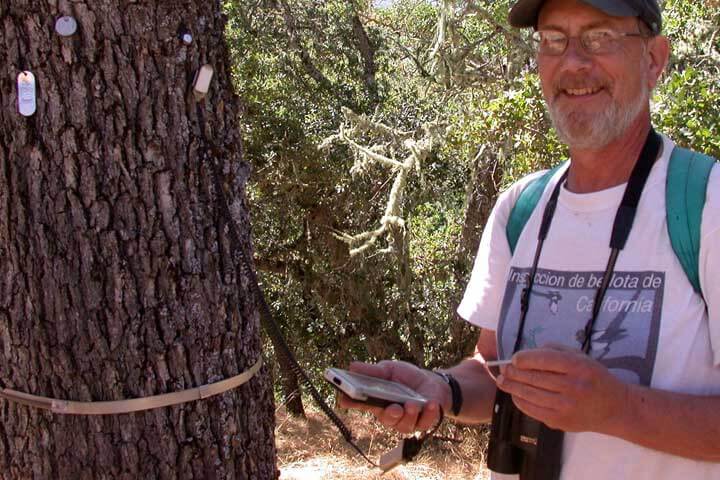Thermochron Case Study – The mystery of masting
The Mystery of Masting
How Thermochrons are providing insights into a biological puzzle
Everyone knows that oak trees produce acorns – a process that scientists call masting. The trouble is, they don’t do it every year. In fact, there didn’t seem to be any pattern in when they produce acorns and when they were bare.
Enter Walt Koenig, Senior Scientist at Cornell University.
For more than 15 years, Walt and his team have studied the effects of microclimates on acorn production levels in California oaks at Hastings Reservation, and Thermochrons have played a major role.
“Masting has a chain reaction effect on the environment. With variations in acorn crops, we see corresponding changes in populations of deer, mice, ground-nesting birds, and other species,” explains Walt.
To test their hypothesis that weather influences masting, Walt and his team have been using Thermochrons to record temperature variations and match those results to acorn counts.
“We were trying to discover the mechanism that drives masting. We had discounted other factors such as chemical signalling. Our attention turned to weather,” said Walt.
The researchers attached Thermochrons to trees and set them to record every four hours. What they found lends weight to their theory.
“We have found a direct correlation between mean April temperatures and acorn production,” explains Walt. “Although we had some hiccups, the Thermochrons were wonderful in terms of allowing me to get data that would have been unfeasible any other way. Just set and forget.”
The water resistant, stainless steel construction of Thermochrons allows them to be deployed in the field and survive conditions that would ruin other loggers.
You can read more about Walt’s work on this web page.






